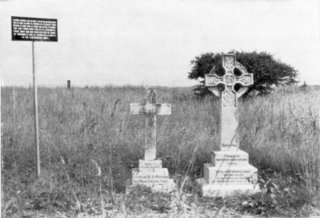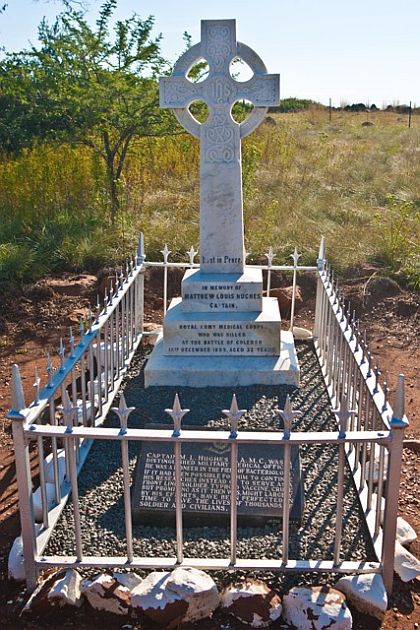

 The South African
The South African
by R.E. Stevenson
"Not haemorrhagically likely", or words to that effect, is what Winston Churchill probably said as the surgeon approached him with a deprecating manner and a serum syringe.
It happened on board the Dunottar Castle when they were on their way to the Anglo-Boer War in 1899. Most people on board had been inoculated against typhoid but Churchill would not be one of them. He was not convinced by medical arguments nor amused at the haggard forms which crawled about the deck in the supreme discomfort and high fever which usually followed inoculation.
Soon, however, all were "gloriously immune." Sez you", or words to that effect, said Churchill. He decided to "trust to his health and the laws of health" and thought how much better it would be if someone would invent an inoculation against bullets.
He was very wrong. Had he only realized it he was many times more likely to get typhoid than be hit by a bullet, although he was alwavs in the middle of any scrap. Typhoid (or enteric, to use its other name) and dysentery killed by the thousand where enemy action killed by the score.
A subaltern of an Irish regiment tells how the doctor on his troopship gingerly handling this latest brew gave him a heroic overdose. News of his immediate collapse and delirium, well dramatized bv his soldier servant, quickly reached the lower decks, where it needed the silver tongue of the doctors to allay the panic and the iron fist of the Commanding Officer to quell the threatened mutiny.
Looking back long after the event, one can see that the arguments in favour of inoculation were not very convincing and that the medical officers knew this. Actually, results were not bad and the serum proved effective, though by no means completely effective. One must admire the members of the Medical Corps, hag-ridden as they were by civil and military authorities. They did realize that disease was going to be far more dangerous than the enemy and they persisted, as far as they were allowed, in practising every promising or proved method of prevention.
All the more credit because their Corps was the Cinderella of the Army and their hygiene section was their newest and least-proved offspring. Doctors, said the soldiers, were useful to stop the flow of blood or to prescribe a pill, but their advice was not needed in selecting a camping site or in controlling its water supply.
Capt. Mathew Hughes was the doctor who invited Churchill to a spot of serum. He was one of the earliest experts in Army hygiene. He had made a special study of the prevention of disease (especially Malta fever) and the control of epidemics. He had been hygiene officer at Aldershot, where he had lectured to medical and sapper officers on camp and field hygiene. He had, incidentally, also lectured on chiropody. He fumed impotently against portentous bureaucrats and blimps "who", to use the words of that very unblimpish general, "shackled the R.A.M.C. with a dread of regulations." Lord Roberts also said that the medical department suffered greater disabilities than any other, and Sir Frederick Treves fairly let himself go in words which today still have a familiar ring. "The system", he said, "is full of an enormous number of safeguards apparently based on the impression that the officer in charge of a hospital is likely to be incapable and that his incapacity will be minimized by restrictions of all sorts."
Wise words uttered, alas, too late to save thousands of lives.
Running true to bureaucractic and military precedent, Capt. Hughes, the brilliant hygiene officer, was taken off the duties for which he was so well qualified and "selected" as Sir Redvers Buller's personal medical officer. This was a purely clinical job and when attending a brave frontline soldier like Buller, a particularly exposed and dangerous job.
A few weeks after his arrival, Buller took a bad hammering at Colenso. He himself was severely bruised by a spent shell fragment. Many of his staff had miraculous escapes and Hughes was killed.
It was disastrous that he should have lost his life in so needless a fashion. In losing his life, thousands of others whom he might have saved were doomed to lose theirs by the germs of typhoid fever and dysentery.
Capt. Hughes lies in a lonely grave in the veld a few hundred yards to the west of the National Road, south of Colenso. His grave is marked by two memorials, one erected by his family, the other by his Corps. He died before he saw disease descend, as he knew it would, on the Army. Dysentery and typhoid, immemorial scourges of war, devastated every column and every camp. Bloemfontein was the first and worst hit. Infection began at the Modder River and by the time the army reached Bloemfontein it was well established. The water works were in Boer hands. Such water as was available was suspect and in short supply. Out of consideration for the inhabitants, unparalleled in war, troops were not billeted on them. Military camps and hospitals were pitched on the arid, dusty plain where flies settled on them in filthy millions. Flies settled on everyone but, in their disgusting way, seemed specially to pick out and add one more torture to the unfortunate typhoid patients.

Captain Hughes, R.A.M.C., Grave at Clouston, Natal.
What happened in Bloemfontein happened everywhere. Every military graveyard, except those actually on a battlefield, is filled with cases who died of disease. A visit to the Pretoria or to the Mooi River, Intombi Camp, and Ladysmith cemeteries will bring this fact home very convincingly.
Although the germ of typhoid has been isolated for several years, knowledge of the disease was still scanty. Impure water, flies and direct contagion were all rightly blamed. But there was still no certainty as to which factor was most to blame. The essential part of treatment was good nursing; and there were very few nurses.
So little was known that even after the war, Koch, the great German scientist who had discovered the germs of tuberculosis and cholera, could say that typhoid germs died very soon after they had left the human body and that the disease could easily be controlled by rigidly segregating every patient. No greater, no more dangerous fallacy could have been propounded. The use of the serum, crude and unrefined though it was, was a step in the right direction. It caused savage reactions but it certainly helped in preventing the disease or at least in mitigating its severity. It has long since been replaced by the now familiar vaccine which has eliminated all fear of epidemics.
At the time of the Boer War, because of this ignorance, troops and civilians were exposed to horrid tasks; thousands would go about miserable and ill but not bedridden suffering from "simple continued fever." These would now be recognised immediately as being mild cases of typhoid, very prone to developing the most dangerous and fatal complications, and much more dangerous to others by mixing freely with healthy people.
Treatment required good nursing; trained nurses were pitifully few. There was no really effective form of treatment and it is only in the last few years that an effective drug has been prepared.
An example of what could be done in ignorance was the return of 20,000 blankets, unsterilized, unwashed, from Army hospitals in South Africa to England for sale as redundant Army stores. A sharp epidemic of typhoid was traced back to the troopship, Cornwall, on which some of these blankets had been used on the homeward voyage. Due to the vigilance of a hygiene officer most of these blankets were recalled after actually having been distributed in England.
The Boer War has been called the last of the Gentlemen's Wars, but the unfortunate Gentlemen who waged it were sent out with little more protection against disease than were the Crusaders.
"The tragedy of Captain Hughes" has been reproduced from the Army Medical Services Magazine by kind permission of the writer. Dr. R. E. Stevenson, of Pietermaritzburg, South Africa, was a lieutenant-colonel in the South African Medical Corps, and was a member of the South African War Graves Board and is Chairman of the Natal Provincial Historical Committee.
Dr. Stevenson writes to say that he wrote "The Tragedy of Captain Hughes" some years ago, and the story was revived in his mind recently when the town council of the rapidly expanding industrial town of Colenso decided to call one of their streets "Hughes Street". He continues:
"The South African War Graves Board have also recently transferred Capt. Hughes' body, with its fine headstones, to the 'Field of Memory' - a 71-acre memorial to the Battle of Colenso. This 'field' lies a little south of Colenso and has been laid out as a memorial of the battle, the site of which has been engulfed in and built over by the native location, the sewage farm, the power station and railway embanknients, etc.
"Capt. Hughes' body was exhumed, placed in a coffin and reburied in the field now called Clouston, but which encloses what were known as Shooters Hill and Naval Hill at the time of the battle. His original grave would have disappeared in the processes of soil erosion. His new grave crowns the ridge and a notice-board by it tells briefly of his life and work. The new position of the grave is more appropriate -- on the crest of a ridge seen very prominently from the national Durban-Johannesburg road. It is shown up especially well with the setting sun behind it.
"At the Colenso ceremony the Bishop of Natal officiated, and we had a representative from the British Embassy to speak and lay a wreath. We also had local ex-officers of the East Surrey's, R.A.F.,etc. to lay wreaths, as well as Brigadier Robertze, the senior serving officer of the South African Forces in Natal, and the commanding officers of the Natal Field Artillery, and the Natal Carbineers. It turned out to be an excellent show; incidentally a wreath was laid in tribute to Capt. Hughes in particular and the R.A.M.C. in general."
In 2013 the following photograph of the gravesite was forwarded to the Scribe. It is reproduced here by kind permission of Sam J Basch (the photographer)

Grave at Clouston, Natal, in 2013.
In April 2013 C June Barnes
Return to Journal Index OR Society's
Home page
I am editor of Genesis - the eMagazine of eGSSA - http://www.eggsa.org and was sent an
image of his grave as it is today by a member. This prompted me to research him and write a
short bio for the magazine.